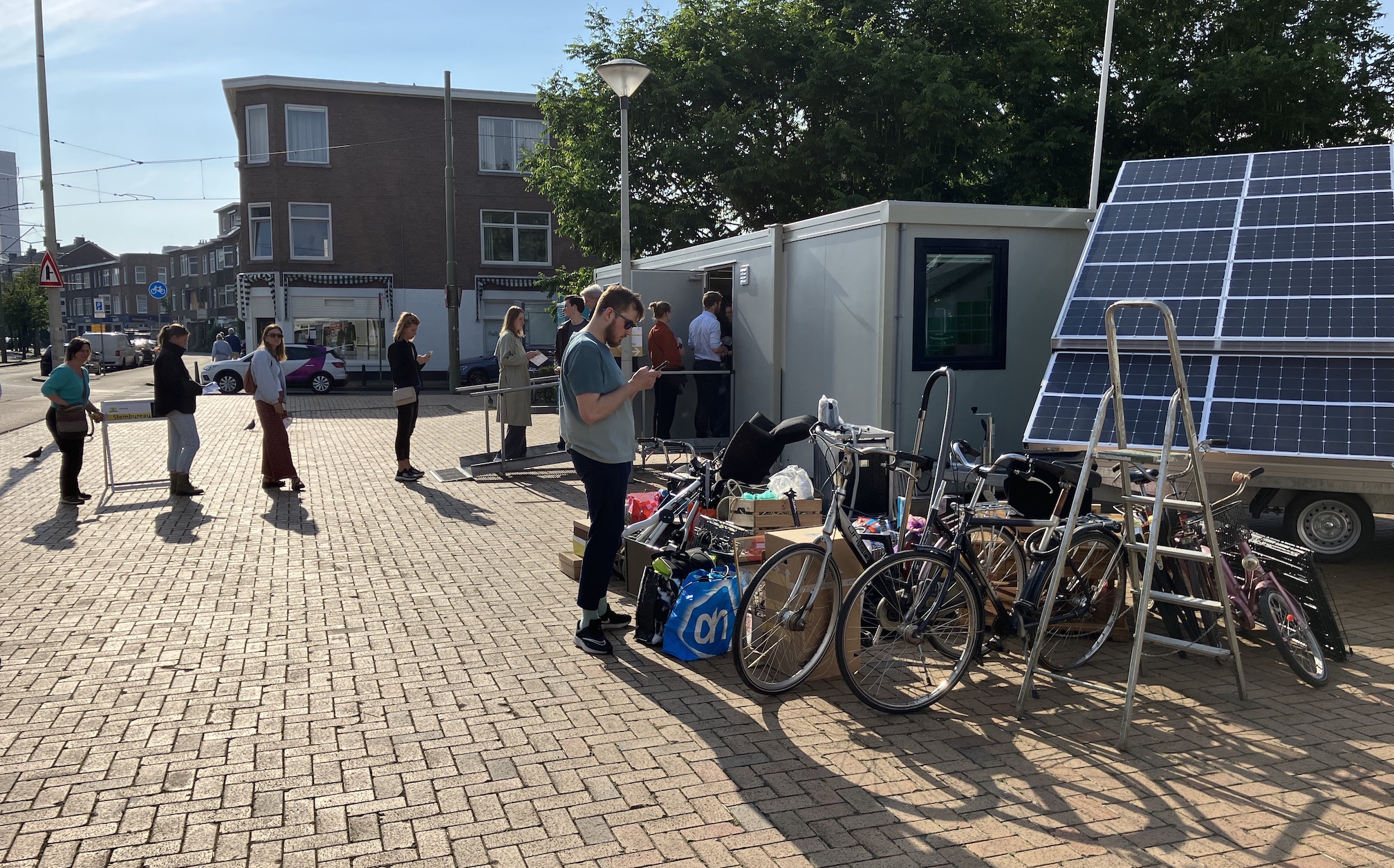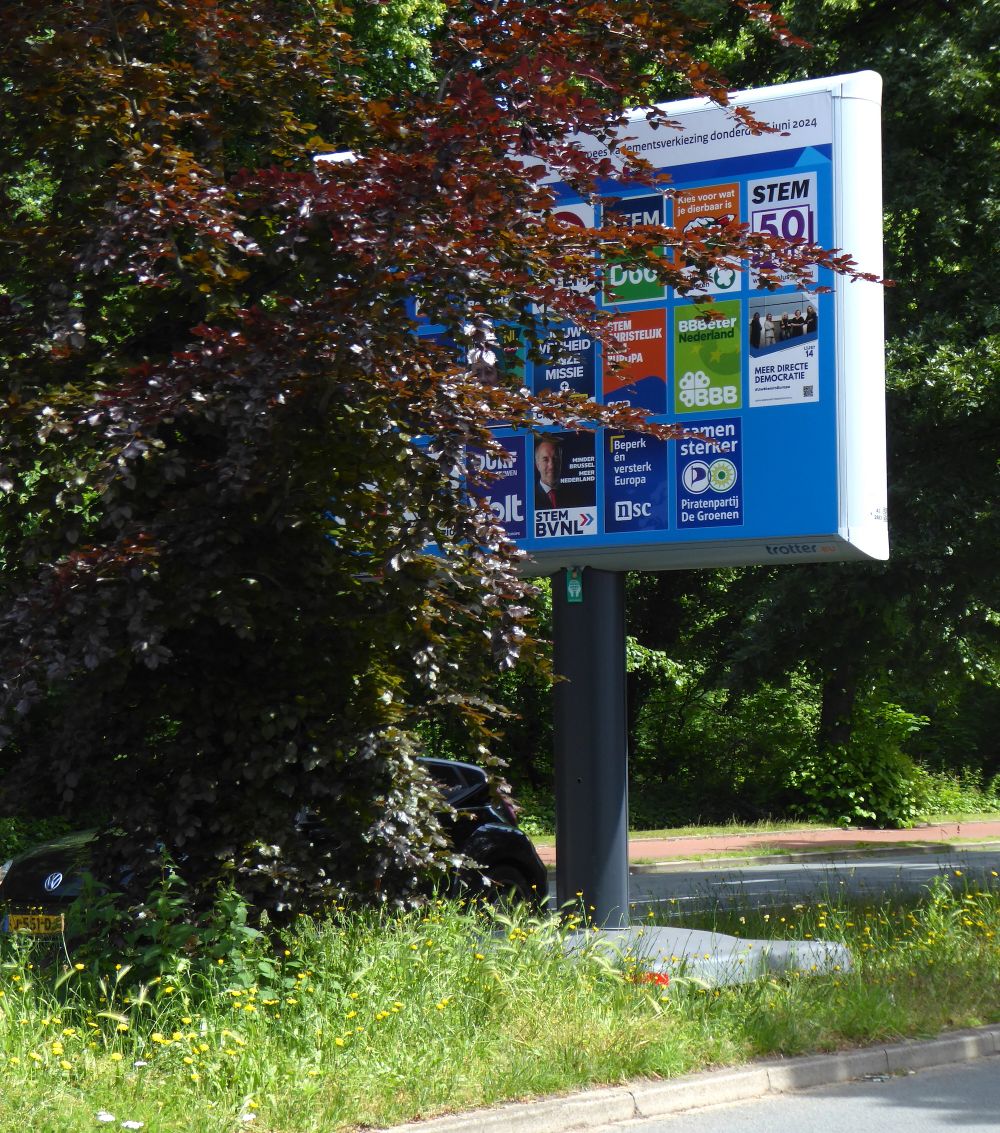EU-verkiezingen in NL: de duiding
▼ Gister dacht ik nog, op basis van de resultaten in het stembureau waar ik vrijwilliger was, dat links wellicht nog groter zou worden dan in de exitpoll. Dat had ik goed mis! GL/PvdA haalde 0,6 - 0,9 % minder (dan de exitpoll en De Hond, respectievelijk), maar ook de PVV 0,6 - 0,1 % minder. De uitslag op basis van 342 van de 346 gemeenten:
- GL/PvdA: 21,0% (8 zetels)
- PVV: 17,0% (6 zetels)
- VVD: 11,3% (4 zetels)
- CDA: 9,5% (3 zetels)
- D66: 8,4% (3 zetels)
- BBB: 5,4% (2 zetels)
- Volt: 5,1% (2 zetels)
- PVDD: 4,5% (1 zetel)
- NSC: 3,8% (1 zetel)
- SGP: 3,7% (1 zetel)
- CU: 2,9%
- FvD: 2,5%
- SP: 2,2%
- 50PLUS: 0,9%
- JA21: 0,7%
Meer nog dan gebruikelijk riepen alle partijen zichzelf tot winnaar uit. Want er is altijd wel een eerdere uitslag om mee te vergelijken waarbij deze uitslag gunstig afsteekt. Daar gaan we dus even doorheen prikken. Sowieso is naar het aantal zetels kijken lastig, aangezien dat er bij de verkiezingen in 2019 voor Nederland 26 waren. De PVV haalde toen net geen zetel. Maar na het vertrek van de Britten ging Nederland naar 29 zetels en kwam de PVV alsnog in het Europees parlement. (Weliswaar stapte deze PVV’er later over naar FvD, waar hij gezien zijn standpunten beter op zijn plaats is.) En na deze verkiezingen krijgt Nederland 31 europarlementariërs.
GroenLinks/PvdA: in 2019 haalde de PvdA in z’n eentje 19% van de stemmen en GroenLinks nog eens 10,9, dus samen 29,9%. Dus de huidige uitslag lijkt teleurstellend. Maar 2019 was een uitzondering: in 2014 haalden de twee partijen 9,4 + 7 = 16,4% van de stemmen. En bij de tweede-kamerverkiezingen 15,8%. Dus 21% is in de huidige situatie een goede uitslag, hoewel geen garantie voor toekomstige verkiezingen (als zoiets al bestaat) gezien de lage opkomst.
PVV: zoals gezegd, de PVV haalde in eerste instantie net geen zetel in 2019 met 3,5% van de stemmen. Maar in 2014 haalden ze 13,3% en bij de verkiezingen in november 23,5%, en in de peilingen staan ze nu torenhoog. Die 17% laat zien dat de PVV zeker een factor van betekenis blijft, maar ook dat de peilingen bedriegen en de PVV-kiezer niet erg trouw is.
De ruk naar rechts valt ook redelijk mee als we PVV, FvD en JA21 optellen. In 2014 haalde PVV in z’n eentje (de andere twee bestonden nog niet) 13,3%. In 2019 PVV en FvD 3,5 + 11 = 14,5%, in 2023 23,5 + 2,2 + 0,7 = 26,4% en in 2024 17 + 2,5 + 0,7 = 20,2%. Dus vijf procentpunt winst voor het ver-rechtse kamp ten opzichte van 2019 en zes procentpunt minder dan bij de landelijke verkiezingen. Ik zou zeggen: enige consolidatie in het ver-rechtse kamp.
VVD: 2014: 12%, 2019: 14,6%, 2023: 15,3%, 2024: 11,3%. Dit is vrij pijnlijk, en op geen enkele manier uit te leggen als een overwinning. De grote vraag is wat voor partij de VVD straks is na dit experiment over rechts: een neoliberale bestuurderspartij zoals we gewend waren, of PVV-light?
CDA: 2014: 15,2%, 2019: 12,2%, 2023 3,3%, 2024: 9,5%. Het CDA zet dus de dalende lijn van 2014 en 2019 voort, maar veert wel flink op ten opzichte van november. Niet bepaald een overwinning, maar ik snap de opluchting.
D66:: 2014: 15,5%, 2019: 7,1%, 2023: 6,3%, 2024: 8,4%. Ik zou zeggen dat D66 geen reden tot feestvieren heeft. Gezien de lagere opkomst is maar twee procentpunten beter dan in november heel magertjes.
BBB: De grote verrassing: 2023: 4,7%, 2024: 5,4%. Wel met de aantekening dat bij de eerste-kamerverkiezingen eerder in 2023 BBB 20,7% van de stemmen haalde. Dus die 4,7% in november was een flinke duikeling. Die zette echter niet door, met ondanks de lage opkomst voor BBB een beter resultaat bij de europese verkiezingen dan bij de landelijke verkiezingen.
Volt: 2019: 1,9%, 2023: 1,7%, 2024: 5,1%. Dit was natuurlijk een thuiswedstrijd voor Volt en met drie keer zoveel stemmen en flink geluk bij de verdeling van de restzetels haalden ze zo even veel zetels in het europees parlement als in de tweede kamer.
NSC: 2023: 12,9%, 2024: 3,8%. NSC verliest ruim tweederde van z'n kiezers ten opzichte van de nationale verkiezingen maar haalt met een vrij smalle marge nog wel één zetel.
De aanstaande coalitie: 2023: 23,5 + 15,3 + 4,7 + 12,9 = 56,4%. 2024: 17 + 11,3 + 5,4 + 3,8 = 37,5%. De aanstaande coalitie raakt dus bijna 20 procentpunt van de kiezers kwijt. Natuurlijk is dat gedeeltelijk te verklaren uit de opkomst. Maar duidelijk is wel dat VVD en NSC in de hoek waar de klappen vallen zitten, terwijl de PVV redelijk standhoudt en BBB zelfs wint. Aantekening hierbij is dat voor PVV en BBB de verkiezingen waarschijnlijk op het perfecte moment kwamen: het coalitieakkoord met alle mooie plannen tegen asielzoekers en voor boeren is uit en er is een premierskandidaat, dus reden voor optimisme, met alle teleurstellingen nog in de toekomst. Voor VVD en NSC komen ze te vroeg: ze hebben nog niet kunnen aantonen dat dit een werkbare regering gaat zijn.
Permalink - posted 2024-06-10


